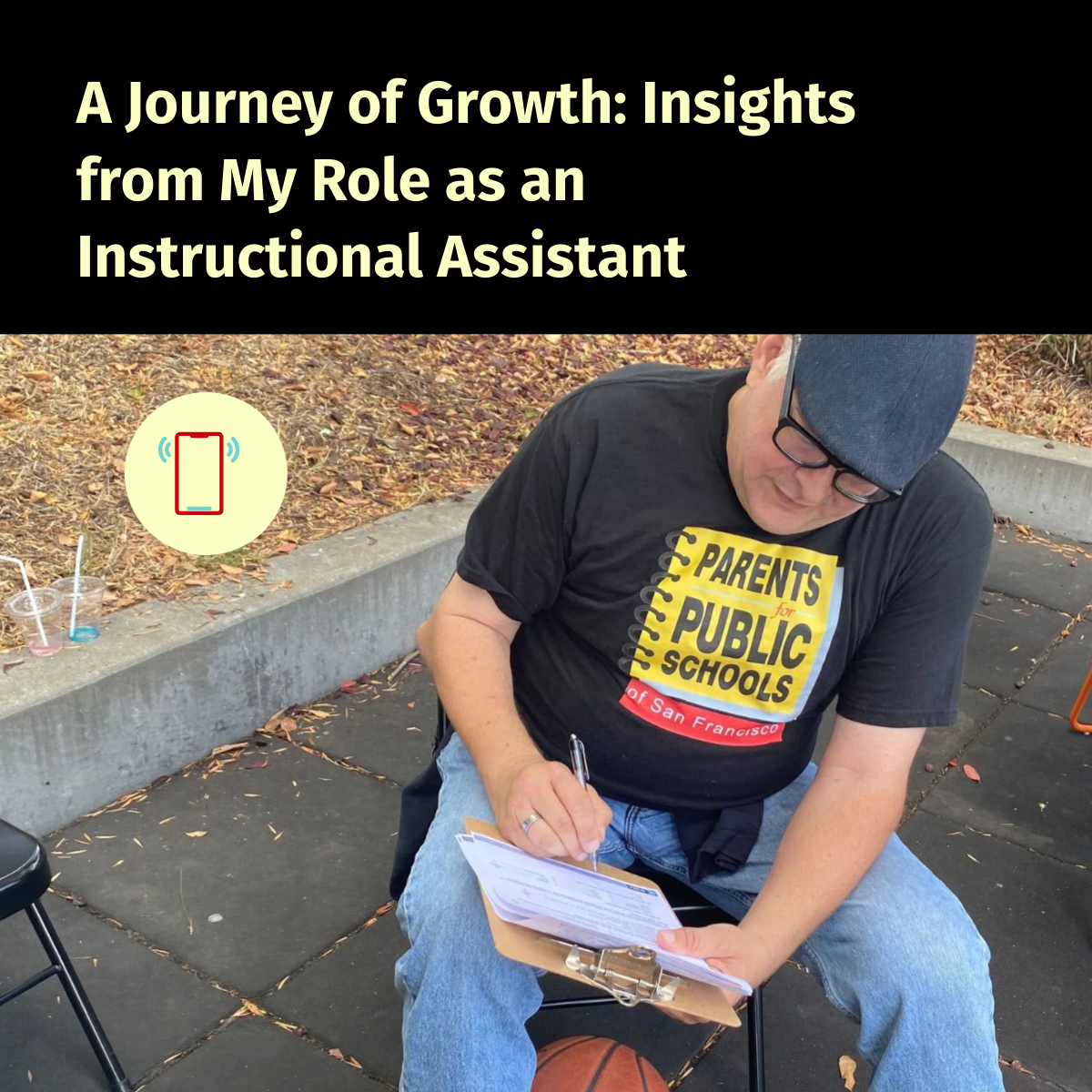A Journey of Growth: Insights from My Role as an Instructional Assistant
An Instructional Assistant and public school parent sits on a basketball court, focused on writing notes on a clipboard while wearing a 'Parents for Public Schools' t-shirt. The scene captures a moment of engagement in a community setting, reflecting the support and dedication to students.
When I began working as an Instructional Assistant (IA) several years ago, it marked my first return to a middle school or junior high school classroom since the late 1980s. Given the remarkable changes that have occurred since then, it felt more like stepping into the 1880s rather than just a few decades later. Up until that point, I had exclusively worked with adults, and the idea of engaging with younger students wasn’t something I had considered seriously. Although I flirted with the notion of teaching during college, it wasn't until I had children of my own that I became comfortable with the idea of working alongside young people.
One of my initial challenges was acclimating to the role itself. When I was in school, the concept of ‘mainstreaming’—where students with various needs were fully included in regular classrooms—was just on the horizon. Growing up just south of the San Francisco City Line, students with developmental disabilities and also now term 'neurodivergence' were often sent to specialized institutions like Loma Chica, a small facility nestled in the fog between my K-8 school and the local community college.
In my childhood experience, I don’t recall sharing a classroom with students who had special needs. Those who faced behavioral challenges were simply labeled as ‘bad kids.’ The only adults present were my teachers and a handful of staff members; there were no instructional assistants supporting students according to their Individual Education Plans (IEPs).
Fast forward to 2025, and I’ve observed a remarkable shift in middle school students. Today, they are far more empathetic and supportive of peers who might be perceived as ‘different’ compared to my own school days. Schools now actively combat bullying and engage in extensive outreach around inclusion and equity. Hurtful labels and negative language are strictly prohibited, fostering a more respectful and cohesive learning environment. The academic challenges are also significantly more rigorous. I find myself learning (or relearning) concepts that I either wasn't taught or may have forgotten—often overlooked by teachers distracted by classroom behaviors.
I share this reflection to inspire others to consider giving back by working with students in special education (SPED). There’s a significant need for IAs, with many school districts conducting job fairs and hiring on the spot. It’s important to be clear: this role won’t make you wealthy, but it offers immense personal satisfaction. While having a student write a single sentence or solve a handful of basic math problems in a day may seem small, you will come to realize the profound impact you're making. And yes, you’ll even learn what ‘6/7’ means along the way!
Written by Chris Costello, Public School Father and Middle School Instructional Assistant

